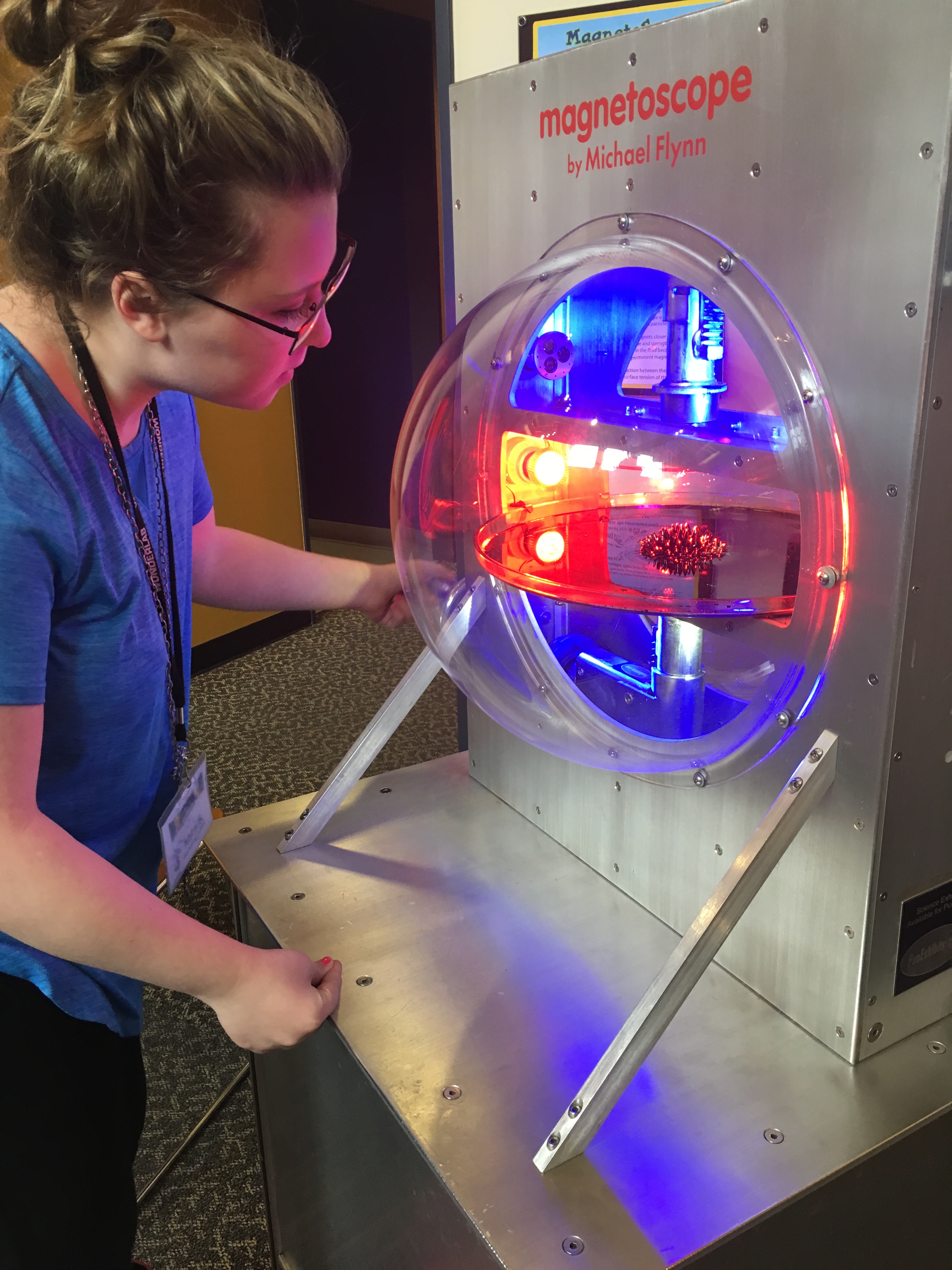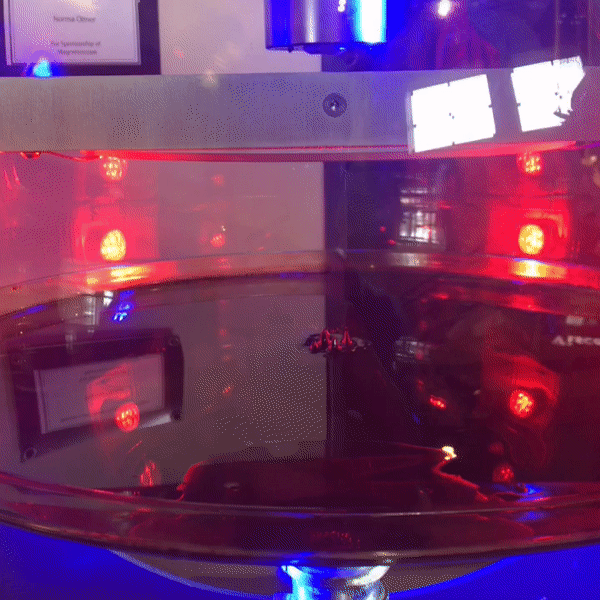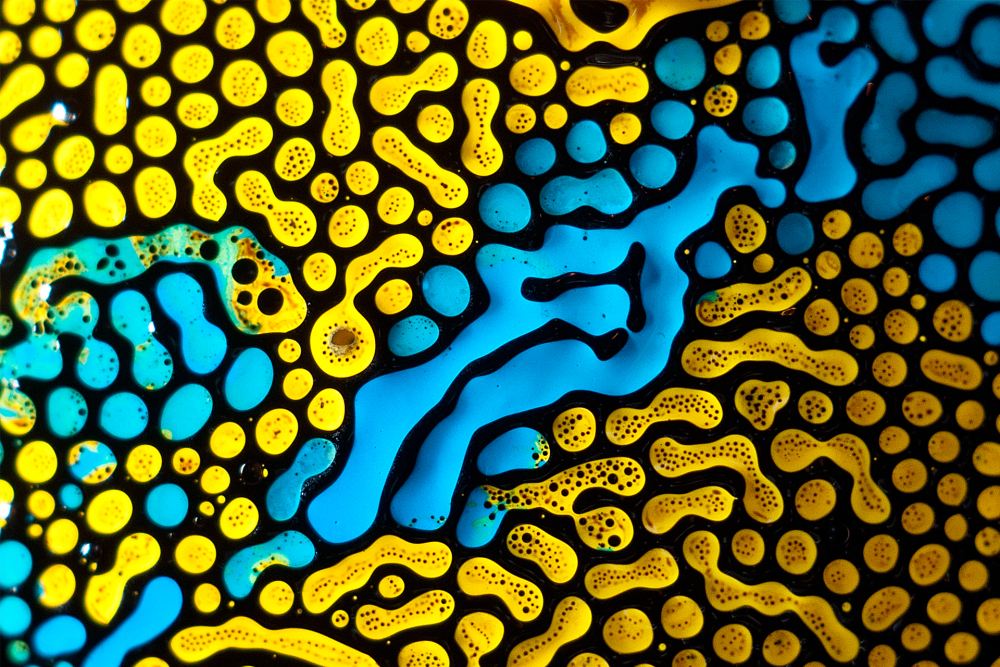On the first floor of the museum, just outside the Bubble Room, sits the MagnetoScope. On my first day here at WonderLab my boss had me play in the with the exhibits in the museum, so I could get familiar with what I would be writing about.
Despite its small stature, at least in comparison to many of the other exhibits, the MagnetoScope caught my eye right away. There is a beautiful, glowing red, gooey texture that reaches upwards as I crank the wheel. Transfixing! It is impossible to look away.
How does the MagnetoScope Work?
The key ingredient in the Magnetoscope exhibit is ferrofluid, which was originally designed by NASA research engineer Steve Papell in 1963 as a liquid rocket fuel.

This all relies on ferromagnetism. Ferromagnetism is the strongest form of magnetism and the most common in our daily lives according to Encyclopedia Britannica. This is the kind of magnetism mainly associated with iron, cobalt, nickel as well as some alloys and compounds containing these metals. When these metals become magnetized and an invisible magnetic field is created by electric currents and magnetic dipoles. Opposite poles are attracted to each other. That’s why, as you crank the handle bringing the magnet closer to the ferrofluid it looks like the fluid is reaching for the magnet and why, as you crank the handle to move the magnet away the ferrofluid settles back down.
Practical Uses for Ferrofluid
As I said earlier in this post ferrofluid was originally developed as a liquid rocket fuel, but it has had a number of uses. It is commonly used in loudspeakers as a cooling method because, as a paramagnet, ferrofluid follows Curie’s law. Curie’s law means that magnetism is decreased as an object becomes more heated, so by putting a magnet by the voice coil of a speaker- which heats up – it attracts cool ferrofluid, displacing the hot ferrofluid toward a heat sink, which cools it.
It has also been used in mechanical engineering for its ability to reduce friction and in electronics to create liquid seals. In the past several ferrofluids were marketed as contrast dyes for MRIs, however the last of these contrasts was discontinued in 2012 due to safety concerns.
Ferrofluid Art
Ferrofluid has also been used, with some commercial success, in art. For example, Concept Zero started out selling small, bottled ferrofluid for office desks, but has since expanded into other ferrofluid art. In this Ted Talk Fabian Oefner talks about how he uses science to make art, including injecting water color paints into ferrofluid. Sachiko Kodama is known for making ferrofluid sculptures.
The next time you come to the WonderLab, make sure you go over and see the MagnetoScope as you walk in. Crank the handle to get some hands on experience with the science of magnetism, but don’t forget to give yourself a moment to take in the beauty of that science.
About the Writer: Abby Bainbridge is studying journalism with a concentration in public relations, as a member of IU’s class of 2021. She is a writing and content development intern in the marketing department at WonderLab Museum of Science, Health and Technology. She has loved the MagnetoScope since she started working her and was excited to have a reason to research ferrofluid.




Leave A Comment